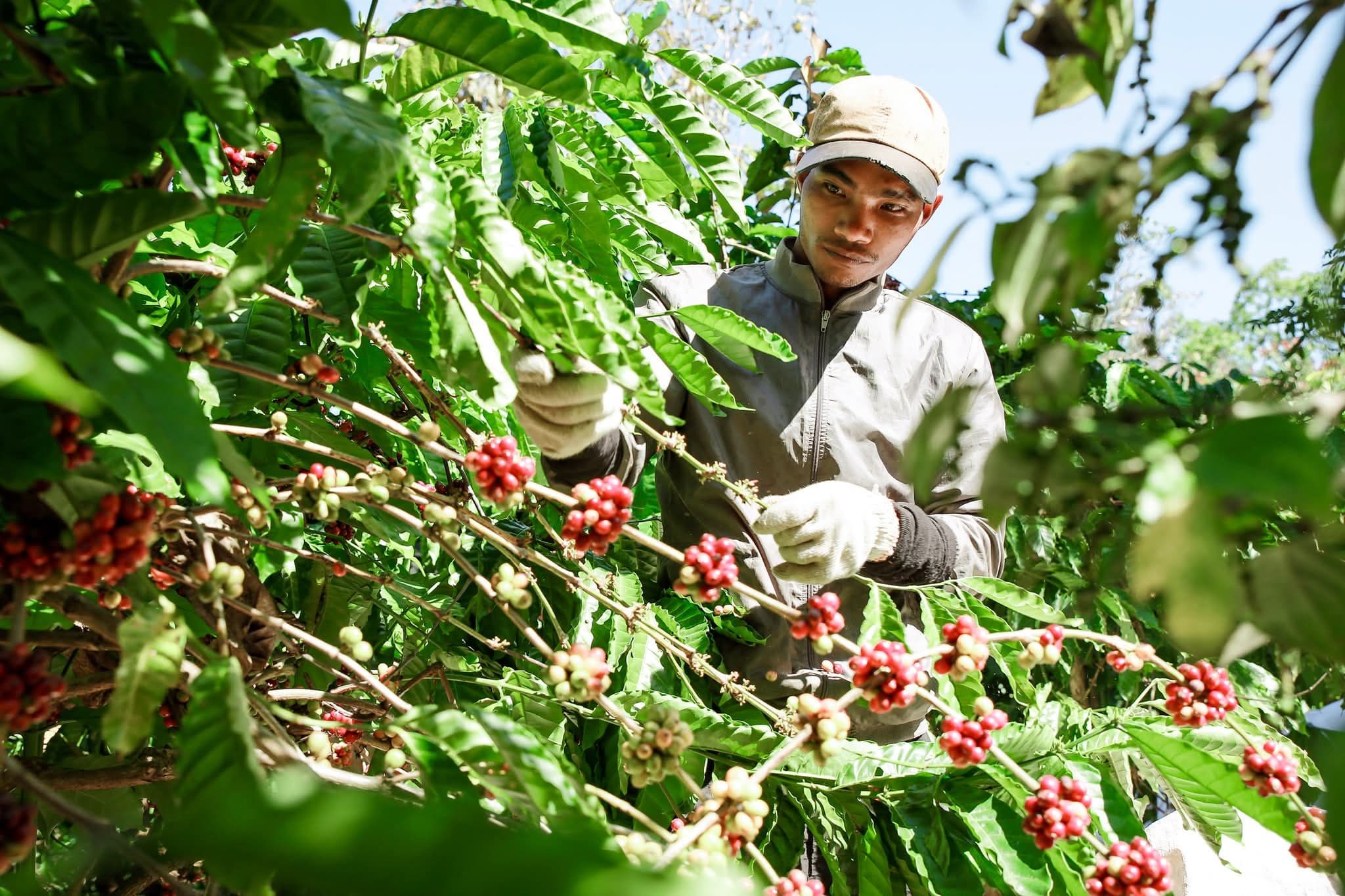Coffee's August Surge: Decoding the Market's Unpredictable Brew
Unpack the August 11 coffee price surge. Explore global triggers, local market dynamics, and the unpredictable factors shaping the future of this volatile commodity.
The August Awakening: A Price Resurgence
August 11 heralded a remarkable turnaround in the global coffee market, injecting a much-needed jolt of energy after a period of significant declines. Domestic coffee prices in , which had dipped uncomfortably below 90,000 VND per kilogram, staged a vigorous comeback, soaring to 104,000 VND per kilogram in the Tây Nguyên provinces. This single-day increase of 2,500 VND reflected a substantial 16% rise compared to the previous month, stirring optimism among local growers and traders alike. The upward momentum wasn't confined to Vietnam's borders; international exchanges mirrored this renewed vigor. On the market, Robusta contracts for September delivery climbed 4.2% to $3,561 per ton, with November contracts also pushing close to a 4% gain, reaching $3,510 per ton. Across the Atlantic, 's Arabica market saw similar robust growth, with September contracts advancing 3.9% to approximately $6,816 per ton. This synchronized global uptrend on August 11 marked the beginning of the week with a clear positive trajectory, prompting many to wonder if this surge signals a sustained recovery or simply another twist in coffee's unpredictable narrative.
Behind the Bean Boom: Unpacking Global Triggers
So, what fueled this sudden ascent across major coffee trading hubs? The answer lies in a complex interplay of supply chain anxieties and shifting trade dynamics. A primary driver appears to be the slow pace of coffee deliveries from , the world's largest producer. Despite nearing the completion of their harvest, many Brazilian farmers are reportedly holding onto their beans, anticipating even higher prices. This reluctance to sell has tightened global supply, a concern amplified by data from Brazil's Commerce Ministry, which indicated a 20% reduction in green coffee bean exports in July compared to the same period last year. Meanwhile, a curious development in saw Arabica production for July jump 19% to 1.37 million bags—a decade high—due to heavy rains delaying earlier harvests. While this might suggest increased supply, it hasn't fully offset broader market concerns. Adding another layer of complexity, the imposition of a 50% tariff on certain Brazilian goods has inadvertently diverted demand, forcing international buyers to seek alternative sources, thereby intensifying competition for available stock and pushing prices upward.
Vietnam's Coffee Crossroads: Local Hopes, Global Currents
Vietnam, a powerhouse in Robusta production, finds itself at a fascinating crossroads where local aspirations meet global market forces. The domestic price rebound to 104,000 VND/kg has been met with mixed emotions among farmers. Many are holding out, clinging to the hope of seeing prices return to a 'golden age' level of 135,000 VND/kg, a sentiment that inherently limits immediate supply to the market. Despite this local retention, Vietnam's export performance in July was nothing short of impressive: 102,810 tons shipped, generating $567.43 million – a significant 36% increase in volume and 49.2% jump in value year-on-year. The average export price for Vietnamese Robusta stood notably higher than exchange rates, signaling strong international demand for the country's beans. Over the first seven months of the year, cumulative exports reached nearly 1.1 million tons, valued at over $6 billion. Yet, a puzzling development in July was the surge in exports by foreign entities, whose market share leapt to 42.7% by volume and 46.4% by value, far exceeding their typical 30% average. This raises intriguing questions about whether major international players were offloading inventory, potentially anticipating a market downturn that, at least for now, has been defied by the recent rally.
The Enigma of the Market: Predicting the Next Price Wave
The recent August surge, especially following a sharp decline in London's Robusta market, vividly underscores coffee's reputation as one of the most challenging commodities to forecast. Just before this latest rally, many buyers had paused new contract negotiations, betting on continued price drops. This expectation was seemingly reinforced by the significant volume of coffee offloaded by foreign entities in July, a move that some interpreted as a signal that major players anticipated a less optimistic market outlook. Yet, the past week's dramatic price increase directly contradicted such predictions, leaving many scratching their heads. The interplay between farmers holding out for higher prices in Vietnam, the slow pace of Brazilian exports, and the curious actions of international traders creates a labyrinth of conflicting signals. As Vietnam's new coffee crop draws near, the central question for the market remains: will prices continue their upward trajectory, or is another unpredictable swing on the horizon? This inherent volatility demands that all stakeholders approach the market with extreme caution, acknowledging that past trends offer little guarantee for future movements.
Cultivating Resilience: Strategies for a Volatile Future
Navigating coffee's unpredictable brew requires more than just watching price charts; it demands a strategic mindset focused on resilience. For farmers, the current price of around 100,000 VND/kg, while not their 'golden age' ideal, is still considered a very good threshold, encouraging continued investment in their crops. However, their collective decision to hold back stock in anticipation of even higher prices, while a valid strategy, also adds a layer of risk and uncertainty to local supply. For businesses and traders, the lesson is clear: robust risk management is paramount. Given the market's propensity for wild swings, actively provisioning for strong price fluctuations and implementing hedging strategies becomes non-negotiable. The slowdown in US-Brazil trade, for instance, highlights the importance of diversifying sourcing and building adaptable supply chains. Beyond immediate price speculation, focusing on long-term sustainability, quality improvements, and direct trade relationships can help stakeholders command better prices and mitigate some of the market's inherent volatility, fostering a more stable and resilient coffee ecosystem for all.
Related Articles

Brewing a New Reality: The Unseen Forces Behind Coffee's Historic Climb

Brewing a New Reality: The Unseen Forces Behind Coffee's Historic Climb

The Golden Bean Rush: Asia's Ascent and the Rewriting of Global Coffee Prices

The Golden Bean Rush: Asia's Ascent and the Rewriting of Global Coffee Prices

When Pixels Meet Prices: Unraveling the Online Coffee Market's Wild Ride

When Pixels Meet Prices: Unraveling the Online Coffee Market's Wild Ride

Sweet Success, Bitter Policy? Navigating Vietnam's Unprecedented Coffee Season
